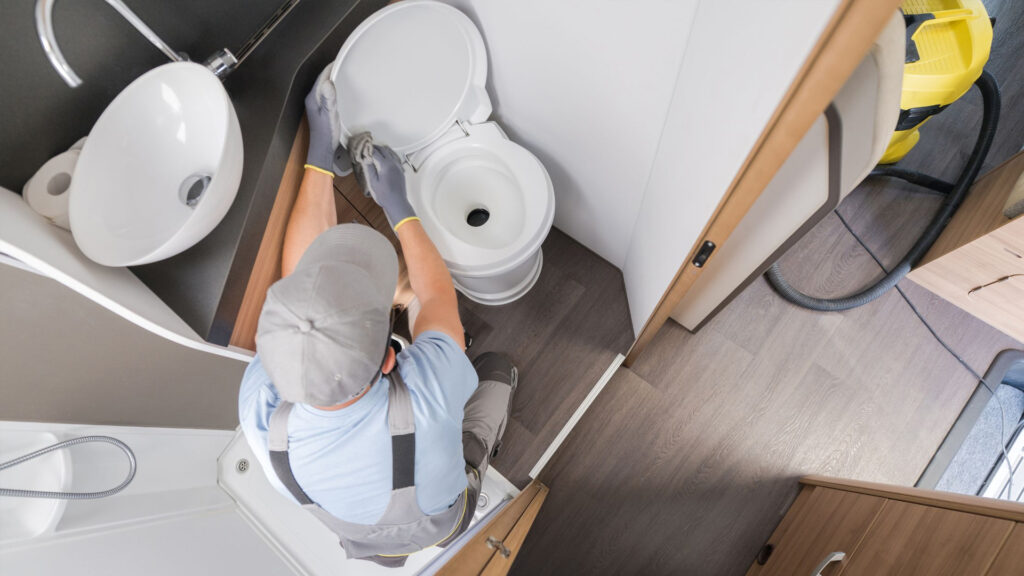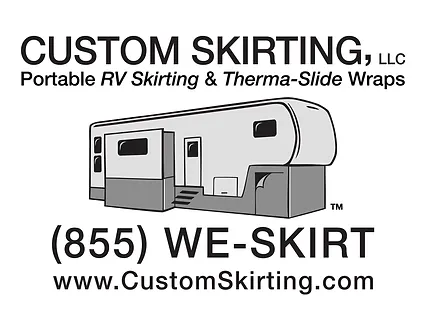
How Do RV Toilets Work: Guide for Campers and RV Owners
Table of contents
RV travel offers the freedom to explore, but many first-time RVers find themselves asking important questions about everyday necessities—chief among them: how do RV toilets work? If you’ve ever wondered how RV toilets work, or found yourself googling how does a camper toilet work or how does an RV toilet work, you’re not alone. RV toilets are designed differently from home toilets, and understanding their systems is key to comfortable and sanitary travel. This comprehensive guide covers everything from the types of RV toilets available to their operation, maintenance, and troubleshooting. With the right knowledge, you’ll find that RV toilets are efficient, easy to use, and perfectly suited for life on the road.
Understanding RV Toilet Basics
Unlike traditional residential toilets, RV toilets are built with mobility, water efficiency, and waste management in mind. Where a home toilet is connected to a city sewer or septic system, RV toilets rely on a self-contained holding tank system.
The core components include:
- Toilet bowl: Smaller and lighter than household versions.
- Flush mechanism: Foot pedal, hand lever, or electric button.
- Holding tanks: Specifically, the black water tank where toilet waste is stored.
Since RVs have limited water supply and storage, toilets are built to use minimal water per flush—typically between 0.3 and 0.6 gallons. Understanding these basics is essential for knowing how RV toilets work and avoiding common maintenance pitfalls.
Water Sources for RV Toilets
RV toilets draw water from two main sources:
- Freshwater tank – Used when boondocking or dry camping. Toilet use reduces overall freshwater supply.
- Campsite hookups – Connected directly to pressurized water systems, offering consistent water flow.
Water pressure can vary. When using the freshwater tank, pressure comes from the RV’s water pump. When connected to a hookup, campground pressure dictates flow. Understanding the water source helps manage water usage and ensures consistent toilet performance.
Flush Mechanisms Explained
There are three primary types of flush mechanisms in RV toilets:
- Foot pedal: Common and simple. Press partially to fill, fully to flush.
- Hand lever: Similar to home models but smaller.
- Electric flush: Push-button convenience, usually in luxury RVs.
To use an RV toilet:
- Fill the bowl slightly with water to help prevent waste from sticking.
- Use the toilet, then flush by activating the mechanism.
- Check for complete disposal of waste.
Proper technique prevents clogs, conserves water, and maintains sanitation—key to understanding how does an RV toilet work.
Types of RV Toilet Systems

There are several types of RV toilets, each offering unique benefits and suited to different travel needs.
Traditional Gravity-Flush Toilets
The most common system, gravity-flush toilets use gravity to move waste from the bowl to the black tank.
How does a camper toilet work in this setup?
- Press pedal or lever to release water.
- Waste falls into the black tank below.
- Seals and valves prevent odors from escaping.
Popular models: Dometic 320 Series, Thetford Aqua-Magic Style II.
Pros:
- Simple and reliable
- Minimal electricity required
Cons:
- Directly above the black tank
- Requires manual cleaning and tank emptying
Macerating Toilets
These toilets grind waste into a slurry before pumping it into the black tank. Ideal for RV layouts that don’t allow a straight drop.
How RV toilets work in macerating systems:
- Flush activates motorized blades.
- Ground waste is pumped into the tank.
Popular models: Dometic MasterFlush 8700 Series.
Pros:
- Flexible placement
- Reduced clogging
Cons:
- Requires electricity
- Higher maintenance needs
Cassette Toilets
Cassette toilets are compact systems with a built-in, removable black tank accessible from outside the RV.
How does an RV toilet work here:
- Waste enters a small tank under the toilet.
- Tank can be carried to a dump station and emptied manually.
Pros:
- No need for sewer hose
- Ideal for smaller RVs
Cons:
- Limited capacity
- Frequent emptying needed
Composting and Waterless Toilets
Eco-friendly and great for off-grid travel, composting toilets separate liquid and solid waste and rely on natural decomposition.
How does a camper toilet work without water?
- Solids fall into a compost chamber.
- Liquids are collected separately.
- Ventilation systems manage odor.
Popular models: Nature’s Head, Laveo Dry Flush, Incinolet.
Pros:
- No water required
- Long intervals between emptying
Cons:
- Learning curve
- Higher upfront cost
The Holding Tank System
At the heart of how RV toilets work is the holding tank system, which stores waste for later disposal.
Black Water Tanks vs. Gray Water Tanks
- Black tank: Stores toilet waste.
- Gray tank: Collects sink and shower water.
Each tank has sensors to monitor levels. It’s critical to keep these tanks separate to prevent contamination. Larger tanks mean less frequent dumping but require more care to avoid overflows.
Chemical Treatments and Their Purpose
To maintain the black tank, RVers use specific treatments:
- Aqua-Kem Blue: Breaks down waste and paper.
- Aqua-Kem Pink: Adds deodorizing properties.
These treatments help prevent clogs, break down solids, and keep tank sensors functioning. Never use household bleach or drain cleaners—they damage RV plumbing.
Proper Use and Maintenance
Routine care is crucial to ensure your toilet system works smoothly.
RV-Specific Toilet Paper
Why is this important? RV toilet paper is designed to break down quickly, preventing clogs.
Top brands:
- Scott Rapid Dissolve
- Camco RV TST
- Freedom Living Septic Safe
- Valterra Q23630
- Thetford Aqua-Soft
You can test regular toilet paper by placing it in water and shaking—if it disintegrates quickly, it’s safe.
What Not to Flush
To avoid issues, never flush:
- Baby wipes
- Paper towels
- Feminine products
- Food scraps
- Oils or greases
These items can block pipes and damage tanks. Always dispose of them in trash bins.
Regular Cleaning and Maintenance
Clean with non-abrasive, RV-safe cleaners. Maintain seals by applying silicone or RV seal lubricants.
Maintenance schedule:
- Daily: Light cleaning
- Weekly: Inspect seals and valves
- Seasonally: Deep clean tanks and flush systems
Emptying and Dumping Procedures

Knowing how RV toilets work includes understanding how to empty waste safely.
Finding and Using Dump Stations
Find stations at:
- Campgrounds
- Truck stops
- Travel centers
Apps like RV Dump Stations and Sanidumps help locate facilities. Be respectful: clean up spills and follow posted rules.
Step-by-Step Emptying Process
- Wear gloves and attach sewer hose.
- Open the black tank valve first.
- Let it fully drain, then close.
- Open the gray tank to flush the hose.
- Rinse both tanks with water.
- Add chemicals to the black tank.
Emptying Portable and Cassette Toilets
Steps:
- Remove the tank via the service door.
- Carry to a toilet or dump point.
- Empty and rinse thoroughly.
- Add deodorizing chemicals.
- Reinstall and secure the tank.
Odor control is key—ensure seals and ventilation systems are functioning properly.
Troubleshooting Common RV Toilet Problems
Even well-maintained systems encounter issues. Here’s how to fix them.
Dealing with Clogs and Blockages
Symptoms:
- Water backing up
- Incomplete flushing
Solutions:
- Use hot water to break down clogs
- Apply enzyme-based tank treatments
- Use a flexible tank wand or toilet snake
Prevent clogs by using the right toilet paper and flushing with adequate water.
Addressing Odor Issues
Causes:
- Tank not vented properly
- Dried-out seals
- Infrequent emptying
Solutions:
- Refill toilet bowl seal with water
- Clean vent pipes
- Use odor-control treatments regularly
Fixing Leaks and Seal Problems
Leaks around the base or flush mechanism? Check:
- Bowl seal
- Flush valve
- Water line connections
Use appropriate tools to remove and replace faulty seals. Lubricate seals with RV-safe products to maintain flexibility.
By understanding how do RV toilets work, you equip yourself for stress-free RV living. Knowing how does a camper toilet work and exploring the types of RV toilets ensures you choose the right system and care for it properly. Whether you’re new to RVing or a seasoned traveler, this knowledge empowers you to maintain your toilet system and enjoy your adventures without worry.
Keep Your RV Plumbing Flowing—No Matter the Weather!
Understanding how your RV toilet works is just the beginning—now it’s time to protect that plumbing system from the elements! With Custom Skirting, you can shield your pipes and holding tanks from freezing temperatures and avoid costly repairs. Our on-site, custom-fit skirting features the exclusive “No-Snap, No-Gap” channel system, designed to block out water, wind, and snow more effectively than any other skirting solution. Tested through the toughest winters across the U.S. and Canada, it’s trusted by RVers who never compromise on comfort or convenience.
Upgrade your RV with the nation’s #1 skirting solution—get Custom Skirting today and enjoy worry-free adventures, no matter the weather!
